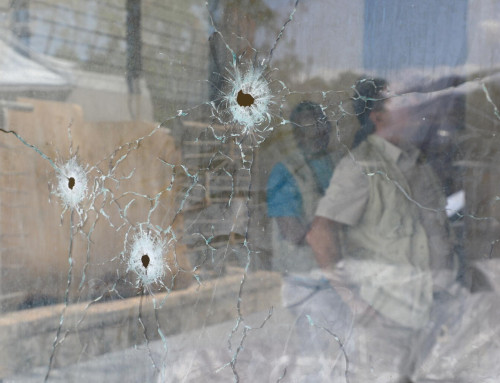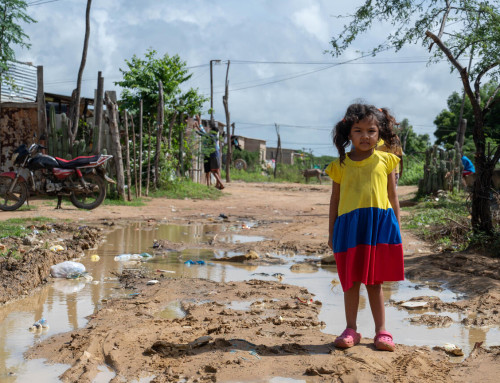As world leaders prepare for the 28th Conference of the Parties (COP 28) of the United Nations Framework Convention on Climate Change, the issue of children affected by armed conflict emerges as a crucial aspect that must not be overlooked.
While climate emergency has risen to the top of the international political agenda, there exists a gap not only in the overall understanding of children affected by armed conflict in the peace and security discussions, but also in the scarcity of literature analyzing the intersection of these critical issues.
To ensure that the discourse surrounding climate insecurity also takes into close consideration the impact on children affected by armed conflict as a specific group, with its own rights and protections in accordance with the Convention of the Rights of the Child, the Office of the Special Representative of the Secretary-General for Children and Armed Conflict (OSRSG CAAC) published exploratory research today in form of the discussion paper, ‘Climate Insecurity Impacts on Children and Armed Conflict’. This paper frames the topic of climate insecurity and the six grave violations committed against children that are monitored through the United Nations’ CAAC Agenda and seeks to establish foundational knowledge and spark discussion on analyzing the impacts on children facing both climate insecurity and conflict. The paper does not aim to be exhaustive but rather intends to initiate a broader discourse and research to pave the way for future comprehensive studies in this critical area.
“By focusing on specific contexts such as Burkina Faso, Ethiopia, Mozambique, Myanmar, the Philippines, Somalia, and the Syrian Arab Republic, we wanted to study the interactions between conflict and climate and their potential impacts on the affected children. The research revealed that children in these situations, facing both conflict and climate-related stressors and shocks, have limited ability to access their rights and protections. Particularly affected by climate change are the grave violations of child recruitment and the denial of humanitarian access, while a deeper look is needed to assess how attacks on schools and hospitals, rape and other forms of sexual violence, abduction, and killing and maiming may interact with climate-related stressors,” explained the Special Representative of the Secretary-General for Children and Armed Conflict, Virginia Gamba.
The evolving dynamics of climate change may necessitate a recalibration of our approach to children and armed conflict and the need to incorporate a climate perspective in monitoring and reporting violations against conflict-affected children, especially to create long-term targeted humanitarian responses. Simultaneously, the Climate, Peace, and Security discussions cannot omit CAAC if addressing climate emergency is to be inclusive of all points of view.
“It is fundamental to pay particular attention to children affected by armed conflict in several areas. First, bridging the gap in understanding issues related to children in peace and security discussions by integrating the agendas of the UN Security Council on Children and Armed Conflict and Climate, Peace, and Security. Second, better coordinate and share existing tools that feature climate-related indicators and child-focused analyses. Third, allow for more flexible emergency funding that is linked to child protection and encompasses both response to climate-related stressors and conflict. By focusing on these three areas, the UN Security Council and other key actors in the international peace and security arena will be better poised to achieve their objectives when responding to the urgent impacts of the climate emergency,” said the Special Representative, Virginia Gamba.
As we move forward, the Office welcomes future in-depth follow up to the paper’s recommendations and research to enhance our grasp of the causes and patterns of these violations in order to better address them.
Note to editors:
The analysis includes interviews with Members of the Country Task Forces on Monitoring and Reporting (CTFMRs) as well as consultations with climate and child protection experts from seven countries on the Children and Armed Conflict agenda: Burkina Faso, Ethiopia, Mozambique, Myanmar, the Philippines, Somalia, and the Syrian Arab Republic. It was produced with the generous contribution by the government of Andorra.
###
For media inquiries, please contact:
Ariane Lignier, Office of the Special Representative of the Secretary-General for Children and Armed Conflict, New York. ariane.lignier@un.org






